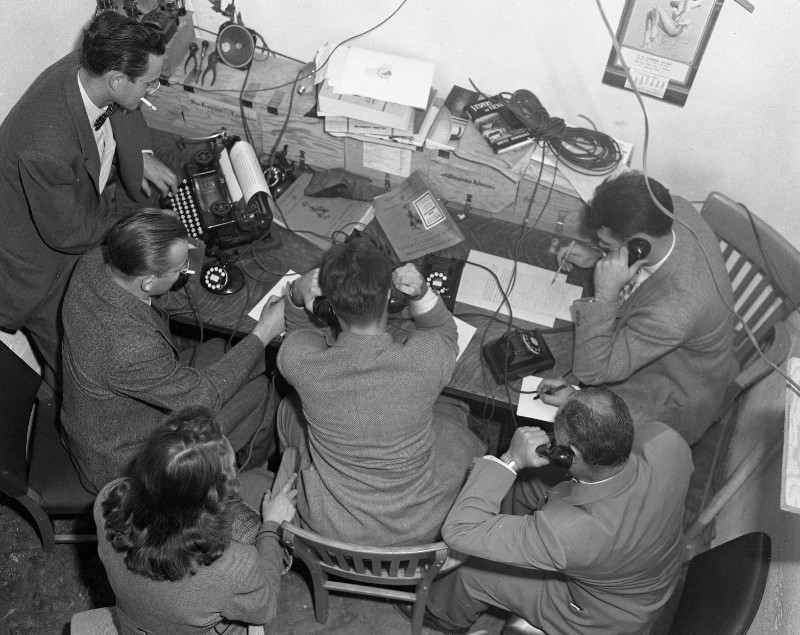One of journalism’s best-kept secrets is that much, maybe even most, of news starts with local reporters and works its way up the news chain, a bit like the food chain. I was in the news game for 40 years, a career split between the San Francisco bureaus of both United Press International and The Associated Press. Much of that time was spent as a broadcast editor, rewriting newspaper stories that would be slimmed down and sent to radio and television stations.
I gave all this much thought recently when I visited the San Mateo County government office building in Redwood City. For old times’ sake, I planned to pop in at the press room to see if I knew anyone. The press room was named for Janet Parker Beck, an accomplished San Mateo Times reporter who died in 1994 at the age of 41. The Times would die a bit later, and so would the press room, which still has Beck’s name on the door but is home to a county office. Not a news person in sight.
There was a time when just about every city in San Mateo County had a newspaper of its own. “There are more newspapers in San Mateo County to the square mile than in any other county of the same size in the state of California,” publisher Denis O’Keefe wrote in a history of county journalism published in 1928. O’Keefe, for many years editor and proprietor of the Redwood City Times-Gazette, said the county was “a fertile field for budding journalists and staid editors.” Compare his optimism to today when news jobs are few and hard to come by. O’Keefe’s comments came when the county boasted 15 newspapers, albeit most of them weeklies.
First in the County
The first newspaper was the San Mateo County Gazette, which made its debut in Redwood City on April 9, 1859. It was a five-column, four-page weekly that shared its offices with a library. The first daily in San Mateo County was the San Mateo News-Leader which came out in 1914. The publication could trace its lineage to 1889 when it was simply called the Leader, a weekly founded by Charles Kirkbride and Richard Jury, both of whom had worked for the Gazette. The rival San Mateo Times started out as a weekly in 1901, quickly growing in circulation until it merged with the News-Leader in 1926 to become a powerful daily.
The deadline-every-minute atmosphere of the newspaper world was recalled by the late Reg McGovern, an award-winning photographer for the Redwood City Tribune, in a 2010 article for La Peninsula, a magazine published by the San Mateo County Historical Association: “The news business was intensely competitive, with four San Francisco papers, the Oakland Tribune, the San Mateo Times and the San Jose newspapers all vying with each other – and with us – for sensational stories and angles.”
Adding to the challenge, McGovern wrote, were the tight quarters where the reporters worked—a former janitor’s closet in the old municipal courthouse (where the San Mateo County History Museum is today.) A 1947 photo he took to make the case for more space exaggerated the cramped conditions, but not by much. The entrance to the museum’s elevator is where the old press room used to be.
Not Missing a Beat
Flipping through copies of the defunct newspapers, one can only be impressed by the amount of local news covered in each edition, everything from church services to city council meetings. Those were the days when reporters had “beats,” meaning they were expected to cover particular areas, say school districts or police and fire departments.
Editorial staffs numbered in the double figures, which brought to mind the song “I Cover the Waterfront,” the swing classic inspired by a 1930s book about a reporter whose beat was the docks, conjuring a time when the comings and goings of ships was a news staple. Time will tell if internet news sites can come up with enough reporters to cover beats. To me, it doesn’t look that promising. I keep reminding myself that “news” is the important part of the word newspaper, not “paper.”
Looking back, I think I could describe my time as being spent in what some have called “The Golden Age of Journalism,” 1960 to 2000, when the nation supported two major wire services. Not only that, it was possible to make a good living as a reporter. If you are lucky enough to have access to a newspaper read it and support it!






